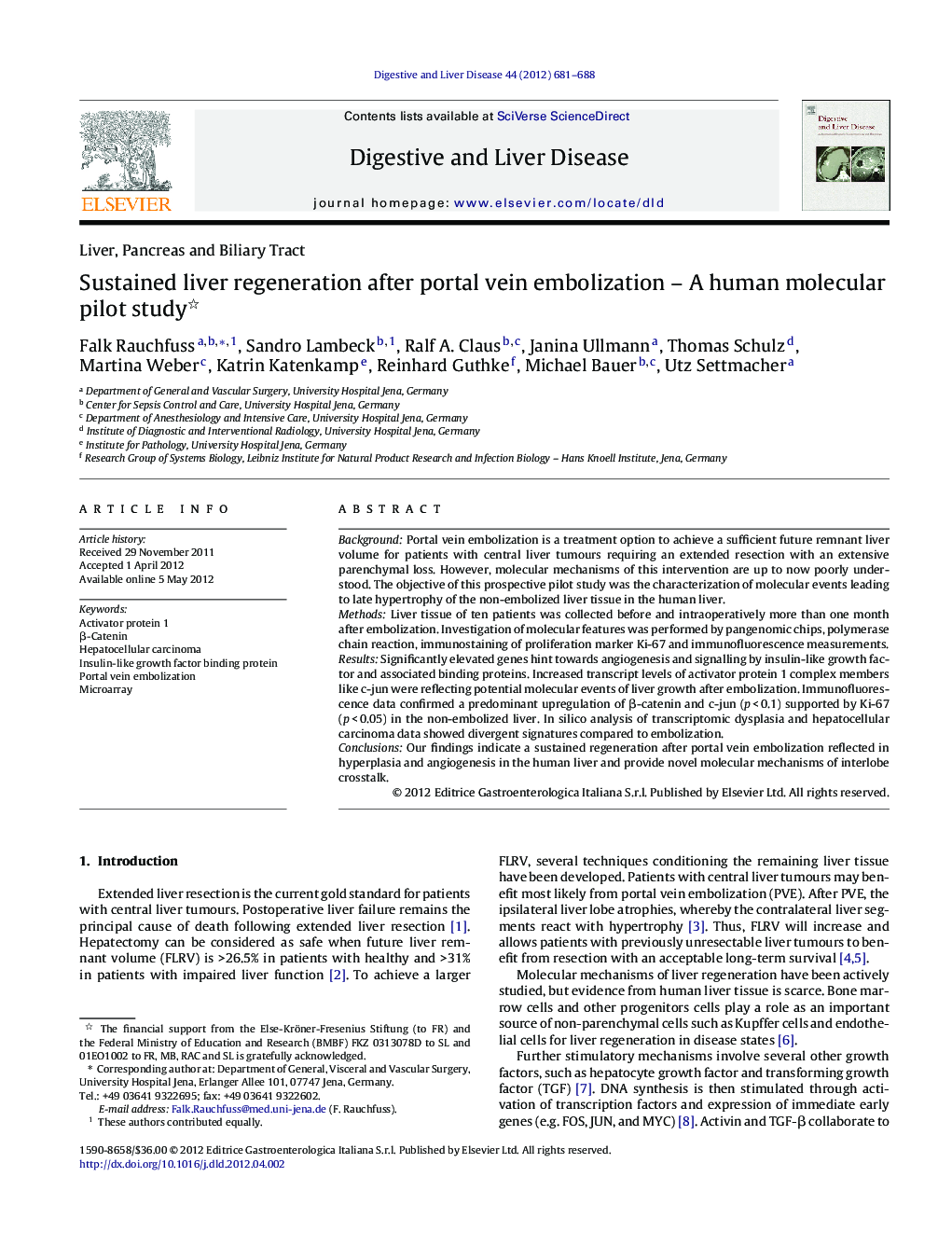| Article ID | Journal | Published Year | Pages | File Type |
|---|---|---|---|---|
| 3263072 | Digestive and Liver Disease | 2012 | 8 Pages |
BackgroundPortal vein embolization is a treatment option to achieve a sufficient future remnant liver volume for patients with central liver tumours requiring an extended resection with an extensive parenchymal loss. However, molecular mechanisms of this intervention are up to now poorly understood. The objective of this prospective pilot study was the characterization of molecular events leading to late hypertrophy of the non-embolized liver tissue in the human liver.MethodsLiver tissue of ten patients was collected before and intraoperatively more than one month after embolization. Investigation of molecular features was performed by pangenomic chips, polymerase chain reaction, immunostaining of proliferation marker Ki-67 and immunofluorescence measurements.ResultsSignificantly elevated genes hint towards angiogenesis and signalling by insulin-like growth factor and associated binding proteins. Increased transcript levels of activator protein 1 complex members like c-jun were reflecting potential molecular events of liver growth after embolization. Immunofluorescence data confirmed a predominant upregulation of β-catenin and c-jun (p < 0.1) supported by Ki-67 (p < 0.05) in the non-embolized liver. In silico analysis of transcriptomic dysplasia and hepatocellular carcinoma data showed divergent signatures compared to embolization.ConclusionsOur findings indicate a sustained regeneration after portal vein embolization reflected in hyperplasia and angiogenesis in the human liver and provide novel molecular mechanisms of interlobe crosstalk.
